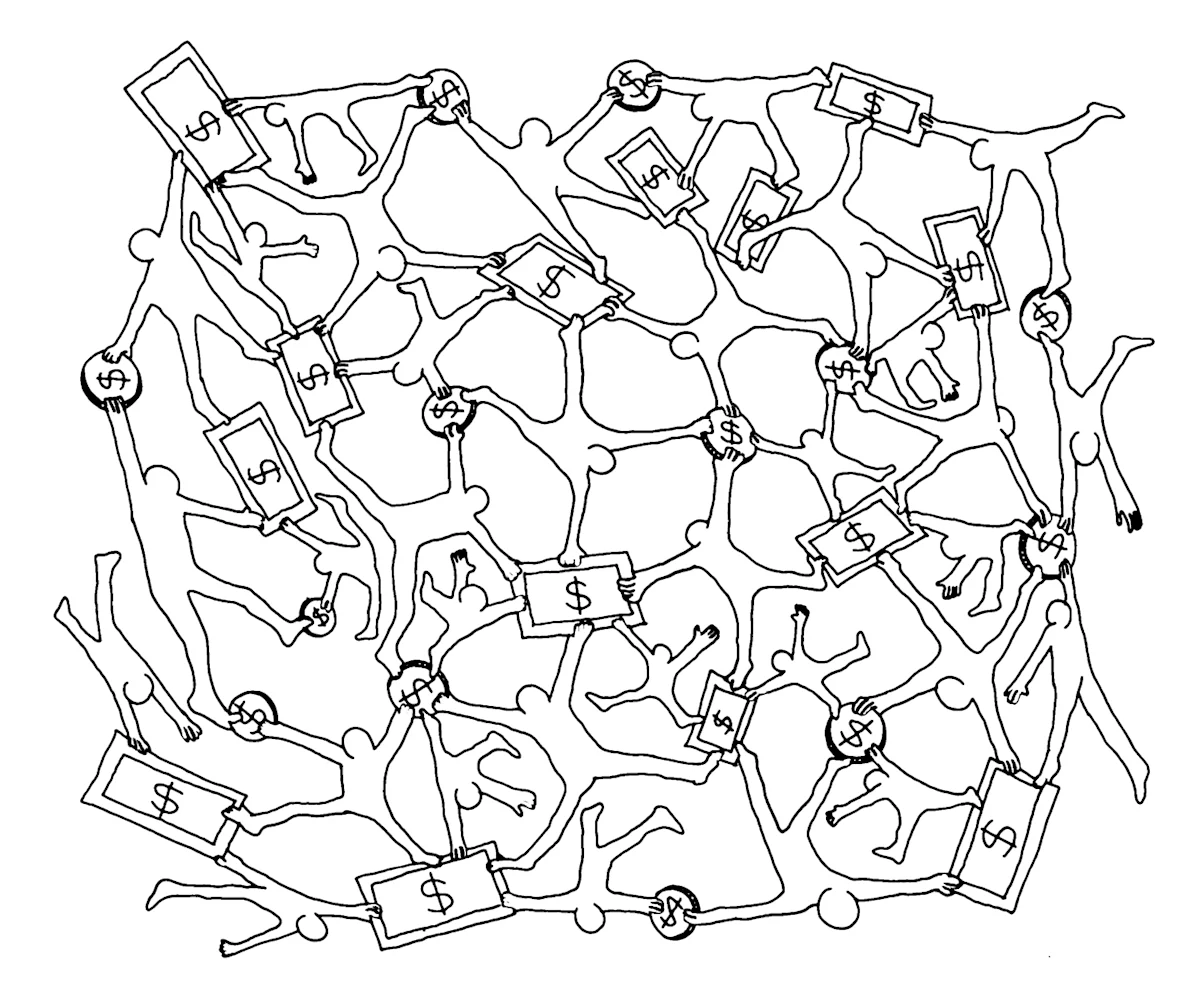How the Metaverse Empowers Users to Build a New Digital Economy.
To better understand this new digital horizon, first, forget about the VR headset. It’s optional. Maybe you got your first impression of the metaverse from Meta founder Mark Zuckerberg’s awkward demonstrations. Donning the Oculus virtual reality headset, Zuckerberg presented the metaverse as an immersive digital social landscape where, in his words, “you’ll be able to sit as a hologram on my couch, or I’ll be able to sit as a hologram on your couch.” Reaching only as far as a virtual reality Second Life, the tech billionaire omitted what is both exciting and concerning for anyone invested in our newest digital horizon. What does the metaverse mean for our creative lives and professions?
In his book The Metaverse and How it Will Revolutionize Everything (2022), author and venture capitalist Matthew Ball suggests that the metaverse is best understood as an evolution of massive multiplayer online (MMO) games like Roblox or Fortnite. With huge user bases, these MMOs thrive without the use of virtual reality. World of Warcraft boasts over 100 million players. Minecraft welcomes 130 millions players every month. The concurrent player record for Fortnite was 78 million of its 350 million registered users worldwide. The population of these games equal the planet’s largest countries and earn revenues to rival the most successful companies on Earth.
Players in these games are building worlds and are protagonists in their own stories. In Fortnite, you fight to be the last player standing. Minecraft offers a different kind of survival game—acquire resources to build or perish. Social media—Facebook, etc.—likewise, are powered by user agency in an online world. Together, MMOs and social media form the pistons and engine of the 21st century economy.
Ball defines the metaverse as a series of interconnected online worlds “that can be experienced synchronously and persistently by an…unlimited number of users”. MMOs lay the groundwork for this. Ball discusses rapper Travis Scott’s 2020 concert in Fortnite. Attended by 28 million users, the 10-minute long show gives a foretaste of what the metaverse might be like. MMO events can take place at a massive scale, with real world effects. Scott debuted a new song during the show, which subsequently went to #1 on the Billboard charts. Ball describes the technical workarounds Fortnite used to make the concert possible. (Attendees were actually split between 250,000 copies of the event.) All MMOs have ways to accommodate this challenge of player concurrency. It's one of the many problems that must be solved before the metaverse becomes a reality.

Bigger picture, the metaverse—this series of interconnected online worlds—will happen when another technical challenge is solved. Herman Narula, co-founder of metaverse technology company Improbable and author of Virtual Society: The Metaverse and the New Frontiers of Human Society says that to be viable “the metaverse has to involve experiences in which value is exchanged from one world to another.” That is, starting with MMO games and their economies, the economic systems of other online entities, like Amazon, plus other entities yet to exist, at the point when these entities interact with each other, the metaverse will be born. Connecting all of these worlds will be digital assets like cryptocurrency, and other non-monetary forms of digital tokens. The metaverse, in other words, is a use case for the digital asset economy. While speculation drives the crypto economy today, crypto-based play-to-earn games like Axie Infinity point to the future of digital assets online. Axie players buy, earn and trade an in-game cryptocurrency, which they can cash-out to fiat after a two-week holding period. In the metaverse, online environments will “talk” to each other, players being able to earn, spend and transfer currency from one world to another. For instance, online vendors could earn crypto selling in-game apparel and then spend that money on, say, Spanish lessons, elsewhere in the metaverse.
Virtual environments need to be populated with all manner of virtual assets, thus marketplaces emerge for developers to contribute and earn passive income as they build and populate these worlds. However, the potential of the metaverse extends beyond in-game purchases, or the trading of assets via an online exchange. Narula, calls the metaverse “the internet of experiences”, and though these experiences require value exchanges, they need not replicate what is already available in the gaming world. Narula states, “any valuable metaverse strategy has got to involve experiences that are not currently extant in video games.”
What the online experiences that constitute the metaverse will look like is anyone’s guess, but at their core is the same open-source ethos and chain of accountability that powers cryptocurrencies and blockchain technology. Far from the dystopia described by author Neal Stephenson, who coined the term ‘metaverse’, these emerging worlds will center on, in William Ball’s words, “collaboration, creativity, and self-expression.”
From the beginning, the online world thrived because of its users. Technologists provided the tools, but internet users truly built the internet. The build-out of the metaverse will follow a similar path. While providing payment rails for this world, blockchain technology offers added benefits for users. The peer-to-peer transactions blockchain makes possible gives users much more agency than is possible in Web2. Open-source tools combined with blockchain will create a user-owner internet—i.e. Web3, perhaps a better term than the metaverse to describe the next era of the internet.
– East Room is a shared workspace company providing design-forward office solutions, authentic programming and a diverse community to established companies and enterprising freelancers. We explore art, design, music, and entrepreneurship. Visit our news & stories page to read more.